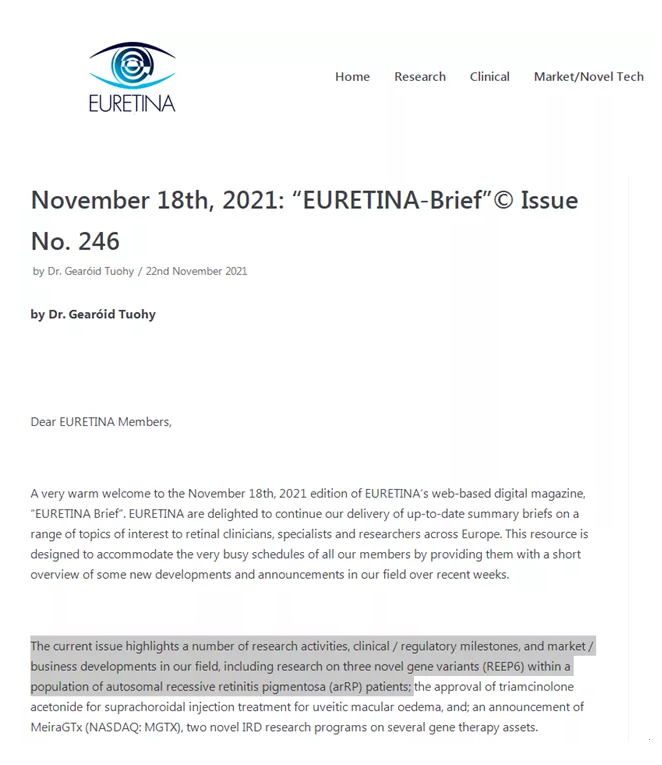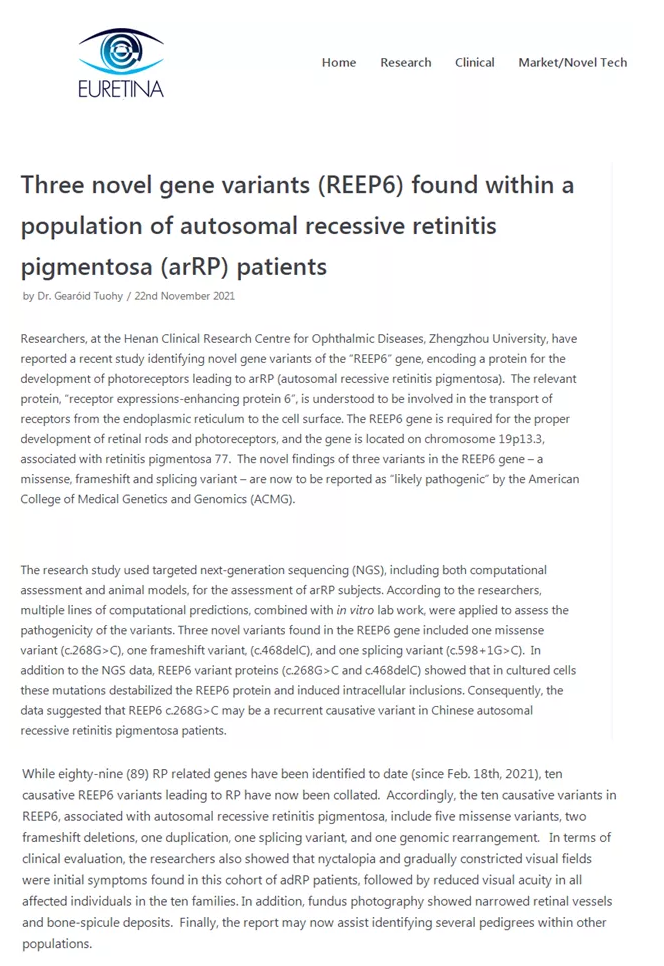China WeChat mobile phone official account.
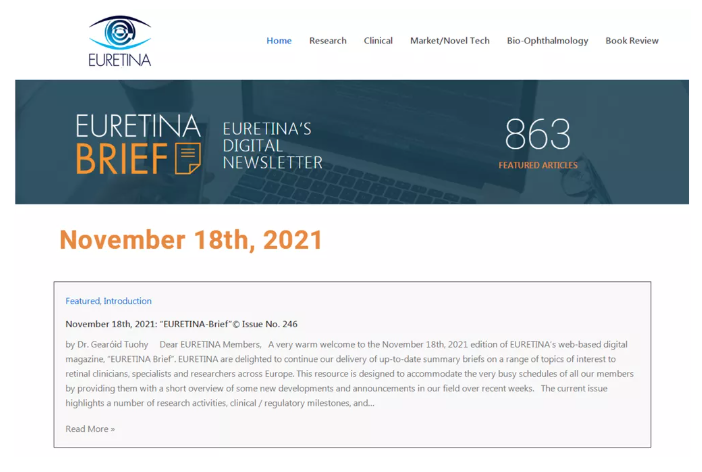
On November 18, 2021, the European Society of retinal experts (euretina), an international authoritative academic organization of retinal diseases, highlighted a research achievement on hereditary retinal degeneration in Henan Provincial People's Hospital in its latest news publication euretina brief. The European Society of retinal experts is composed of more than 3500 doctors, scientists and researchers engaged in the diagnosis, treatment and research of retinal diseases around the world. European retinal bulletin reports the latest research progress and related announcements in this field.
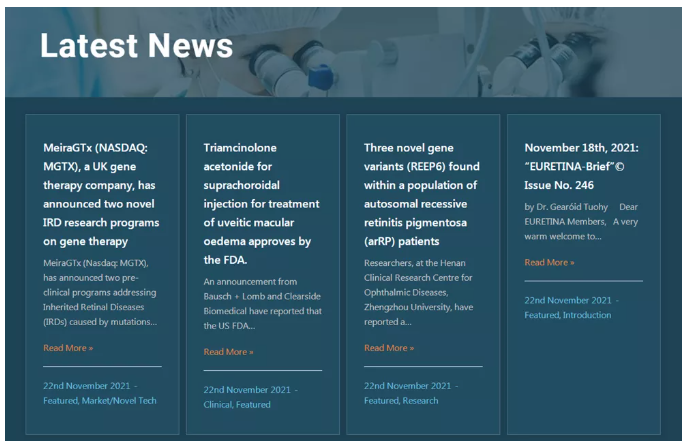
This issue of euretina brief introduces three contents including clinical and related industrial chain progress. Firstly, this paper focuses on a recent research achievement of Professor Leibo's research team on hereditary ophthalmopathy in the ophthalmic clinical medicine research center of Henan Provincial People's hospital. In this study, the team used the self-developed gene detection kit PS400 to find three new reep6 gene variants in three families with autosomal recessive retinitis pigmentosa (arRP). Many methods were used to determine the pathogenicity of the variation, and the possible changes of cell function caused by the variation were tested.
Previously, there were only 7 reports of retinitis pigmentosa caused by reep6 gene mutation in the world. This study not only expanded the pathogenic variation spectrum of the gene, but also pointed out that one of the variants c.268g > C may be a hot spot mutation in Chinese population, which is helpful to determine the pathogenicity of these variants in other races. The first author of the study is Zhang Lujia, a 2018 graduate student. The article was published in genes magazine in April 2021.
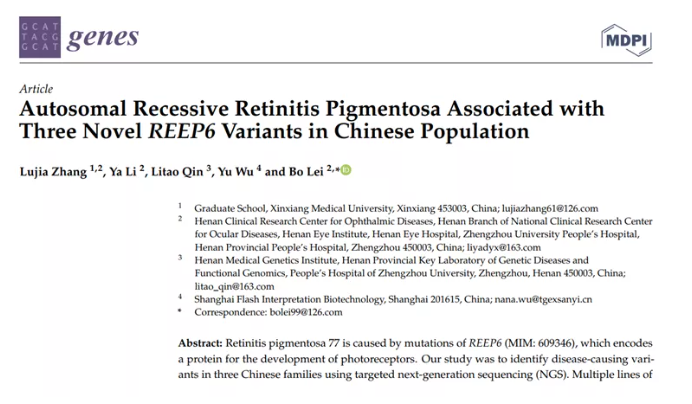
It is reported that the detection rate of hereditary retinal and optic nerve diseases by the genetic detection kit PS400 independently developed by the hospital has reached more than 70%, higher than the level of similar international products. At the same time, the team developed gene therapy drugs for hereditary retinoschisis and pde6b related retinitis pigmentosa, which were successful in animal experiments. These two achievements are expected to achieve clinical transformation and protect the light for patients in the near future.
(Guo Qingge, Li Ya)
